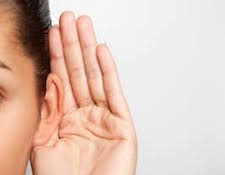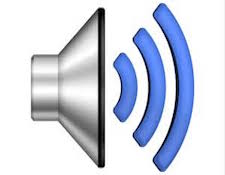It’s the time of year for saving money!
Sound is commonly defined as vibrations that travel through the air or another medium and can be heard when they reach another person’s ear. It’s truly a remarkable thing when you understand just how complex is the human function of hearing. Not only can we easily tell differences in volume, but we can detect directionality and also distance – sort of like hearing thunder and knowing if it is close or far away – and its direction relative to where you are. Perhaps best of all, our hearing allows us to discern even minute differences in the sounds our audio systems produce.
 I once had some very good friends, Randy & Lynn, who along with my girlfriend at the time spent many weekends engaged in cookouts and all the typical functions friends do. About six or so years ago, Randy & Lynn decided to move and we sort of lost touch. Unfortunate, but sometimes such things happen in life. Recently, I was pleasantly shocked when the phone rang and lo and behold, it was Randy.
I once had some very good friends, Randy & Lynn, who along with my girlfriend at the time spent many weekends engaged in cookouts and all the typical functions friends do. About six or so years ago, Randy & Lynn decided to move and we sort of lost touch. Unfortunate, but sometimes such things happen in life. Recently, I was pleasantly shocked when the phone rang and lo and behold, it was Randy.
We got together at my house several days later and after catching up on what, when, where, and how, the subject of my audio system naturally arose. No surprise as it is really hard to not notice. “What does all this stuff do?” was naturally his first question. I then set upon the task of trying to explain, as simply as I could, the basic function of each component. Obviously, listening to some music came next.
When I play music for non audiophiles, I generally prefer to ask them the type of music in which they are interested at the present time. Because I have a fairly varied library of music, I can generally come close to almost any request or genre. I also prefer to not first explain things like imaging, dynamics and other sonic attributes because I’d rather have an unvarnished listening experience occur. To start things off, we settled on Steely Dan – Aja.
 I could see Randy looking left, right and center and a questioning look came across his face. “I don’t see a speaker in the middle,” he asked, “are you hiding one?” My answer was an explanation of how imaging works. As the next hour or so went by, I tried to define, in as understandable terms as possible, the various sonic characteristics audiophiles all cherish. I thought I was doing pretty well until I broached the subject of transient response. After my explanation Randy thought for a minute and asked me “why would you care about that?” “Is how something sounds really that important?” was his follow up question. “To an audiophile,” I responded, “how something sounds is almost all that matters.”
I could see Randy looking left, right and center and a questioning look came across his face. “I don’t see a speaker in the middle,” he asked, “are you hiding one?” My answer was an explanation of how imaging works. As the next hour or so went by, I tried to define, in as understandable terms as possible, the various sonic characteristics audiophiles all cherish. I thought I was doing pretty well until I broached the subject of transient response. After my explanation Randy thought for a minute and asked me “why would you care about that?” “Is how something sounds really that important?” was his follow up question. “To an audiophile,” I responded, “how something sounds is almost all that matters.”
It was in that precise moment that I realized the vast gulf between audiophiles, non audiophiles, and the sound that interests both.
We’ve all, as audiophiles, questioned how anyone could be satisfied with an MP3 player or perhaps even a mid fi system from a big box store. I certainly have asked myself, and others, that very question on more than one occasion. When all the minutia is boiled down about the only common denominator left is sound. Are we simply listening to a song, the mechanics of a song, or both?
 Trying to explain attributes like frequency response, dynamics, clarity, detail, soundstage and imaging of a recorded piece of music to someone whose predominate concern is whether or not they like a song is particularly difficult. Considering what audiophiles attribute to the quality of sound in a song it’s no wonder the general public just doesn’t get it, or us. Everyone can simply like a “great song” – that doesn’t take a lot of skill. Listening to the detail of how a song is constructed, the chord structure, the decay of cymbals, the punch of a bass, and all the sonic flavors audiophiles intrinsically crave, is it any wonder that our hobby is somewhat hard for non practitioners to grasp? Because in the most basic common denominator, a very logical question certainly is “why would you care about that?” – which is the exact question Randy asked. Our answers may be quite varied and one we may have difficulty providing ourselves.
Trying to explain attributes like frequency response, dynamics, clarity, detail, soundstage and imaging of a recorded piece of music to someone whose predominate concern is whether or not they like a song is particularly difficult. Considering what audiophiles attribute to the quality of sound in a song it’s no wonder the general public just doesn’t get it, or us. Everyone can simply like a “great song” – that doesn’t take a lot of skill. Listening to the detail of how a song is constructed, the chord structure, the decay of cymbals, the punch of a bass, and all the sonic flavors audiophiles intrinsically crave, is it any wonder that our hobby is somewhat hard for non practitioners to grasp? Because in the most basic common denominator, a very logical question certainly is “why would you care about that?” – which is the exact question Randy asked. Our answers may be quite varied and one we may have difficulty providing ourselves.
My impression of most audiophiles is that we tend to listen in multiple ways. I’ve been doing projects on a Saturday and had the Sonos playing streamed music in the background. However, I’d absolutely choose the server or the turntable over Sonos for critical listening. I see the salient difference between audiophiles and non audiophiles as the manner in which listening to the sound of a song is conducted. A non audiophile may only be concerned with answering the question “do I like that song?” That question may easily be answered with an Mp3 player. Audiophiles take things one step further and also ask “what about the sonic details?” Our answer to that question is largely determined by a high performance audio system and its ability to render as accurate a presentation as possible.
In the end, Randy and I had a good time catching up that day. I was mostly unsuccessful in converting him to Audiophilia – but that hardly matters. The sounds that I heard were likely different than the sounds he heard. While I listened, in general, to the song, I also was paying attention to the sonic detail of the song. He was simply tapping his foot to “Deacon Blues.” While I’d like to believe he went home and told Lynn that she just “had to go hear this system,” my suspicion is he likely conveyed his belief that after all these years I’d finally lost my mind. Which, coincidentally, is a question I’ve occasionally asked myself as well.





